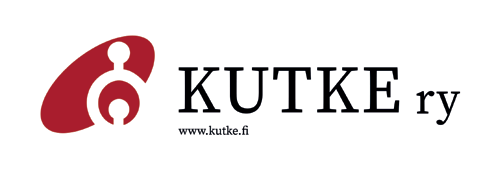Aivoverenkiertohäiriön sairastaneiden tavoitteet kuntoutuskursseilla ja tavoitteiden siltaus ICF-luokitukseen
Avainsanat:
aivoverenkiertohäiriö, kuntoutus, tavoitteet, GAS, ICFAbstrakti
Aivoverenkiertohäiriö (AVH) aiheuttaa usein pitkäaikaisia tai pysyviä toimintarajoitteita, kuten vaikeuksia liikkumisessa, itsestä huolehtimisessa ja kommunikaatiossa. Nyt raportoitava tutkimus on Kelan AVH:n sairastaneille järjestämien kuntoutuskurssien toimivuutta selvittävän tutkimuksen osatutkimus. Tämän tutkimuksen tarkoituksena oli selvittää Kelan painokevennetyn kävelyn, käden tehostetun käytön ja kommunikaatioon painottuvien AVH-kuntoutuskurssien osallistujien tavoitteiden asettamista ja tavoitteiden toteutumista.
Tutkimukseen osallistui 49 AVH-kuntoutujaa, joista 14 osallistui painokevennetyn kävelyn, 16 käden tehostetun käytön ja 19 kommunikaatioon painottuvalle AVH-kurssille. Tutkimuksessa analysoitiin GAS-menetelmällä laaditut Omat tavoitteeni -lomakkeet. Kokonais- ja osatavoitteista analysoitiin niiden merkitykselliset käsitteet, jotka sillattiin ICF-luokitukseen. Sillatuista ICF-aihealueista tarkasteltiin sekä frekvenssejä eri kurssimuodoissa että kokonais- ja osatavoitteiden asettumista ICF-luokituksen eri luokitusportaille. Tavoitteiden saavuttamista arvioitiin GAS-menetelmän T-lukuarvon avulla.
Lomakkeelle kirjatut kokonaistavoitteet olivat painokevennetyn kävelyn ja käden tehostetun käytön AVH-kursseilla suoritusten ja osallistumisen tavoitteita, kommunikaatioon painottuvalla AVH-kurssilla ne siltautuivat myös ruumiin/kehon toimintoihin. Kokonaistavoitteiden siltaukset painottuivat ICF-luokituksessa interventioiden painotusten mukaisesti kävelyyn, yläraajan käyttöön ja kommunikaatioon. Muutamista lomakkeista kokonaistavoite puuttui kokonaan ja osassa tavoite oli niin yleisellä tasolla, että se siltautui osa-alueelle suoritukset ja osallistuminen. Osatavoitteet asettuivat pääosin hierarkkisesti siten, että osatavoite oli kokonaistavoiteen kanssa joko samalla tai tarkemmalla ICF-luokitusportaan tasolla. Joissakin tapauksissa kokonaistavoite ja osatavoite/-tteet eivät kohdanneet. Muutama kokonais- tai osatavoite sisälsi kaksi merkityksellistä käsitettä, mikä näkyi sekä siltauksessa että oli saattanut vaikeuttaa tavoitteen saavuttamisen arviointia. Puolet painokevennetyn kävelyn ja käden tehostetun käytön AVH-kurssilaisista ja 79 prosenttia kommunikaatioon painottuvalle AVH-kurssille osallistujista saavutti tai ylitti kuntoutuksen tavoitteet.
Konkreettisten ja saavutettavien sekä loogisesti etenevien tavoitteiden asettaminen edellyttää lisäkoulutusta GAS:n käyttöön. Tavoitteiden siltaus ICF-luokitukseen auttaa jäsentämään millä toimintakyvyn osa-alueella ja/tai tarkemmalla toimintakyvyn aihealueella kuntoutujan kanssa työskennellään.
Abstract
Rehabilitation goals and their linking to the ICF in subjects with stroke
Stroke often causes long-term or permanent functional limitations, such as difficulties in moving, taking care of oneself, and communicating. This study forms a part of a wider research project evaluating stroke rehabilitation courses organized by The Social Insurance Institute of Finland. The purpose of this article is to investigate how participants of courses focused on body weight supported walking training, constraint-induced movement therapy for upper limbs and communication set goals, and how these goals are realized.
The study included 49 subjects with stroke, of whom 14 participated in body weight supported walking training, 16 in constraint-induced movement therapy for upper limbs, and 19 in communication-focused courses. The goals set by the participants using Goal Attainment Scaling (GAS) method were analyzed. The overall and specific goals were analyzed for their relevant concepts, and they were mapped to the ICF classification. Of the mapped ICF categories, both frequencies within the three course formats and the setting of overall and specific goals for different classification stages of the ICF classification were examined. The achievement of the goals was assessed using the T-value of the GAS method.
In rehabilitation courses focused on body weight supported walking training and constraint-induced movement therapy for upper limbs, the overall goals were mapped to the activities and participation. In the communication-focused course they were additionally mapped to body functions. The mapping of the overall goals in the ICF classification focused on walking, upper limb use, and communication, in line with the course priorities. In a few of the cases the overall goals were not set, and in some cases the goal was so general that it was mapped to the activities and participation component. The specific goals were mainly hierarchical, so that theys were on the same or more precise level than the overall goal of the ICF classification. In some cases, the overall goal and the specific goal(s) did not match. A few overall or specific goals contained two relevant concepts, which affected the mapping and may have made it difficult to assess the achievement of the objective. Half of the participants with body weight supported walking training, constraint-induced movement therapy for upper limbs, and 79% of the participants in the communication-focused rehabilitation achieved or exceeded their rehabilitation goals.
Setting concrete and achievable and logically progressing goals requires additional training in the use of GAS method. The benefit of mapping the goals to the ICF classification is that it helps analyzing in which functional area, and/or the more specific functional sub-area, is the focus of the rehabilitation.
The study highlights the importance of setting rehabilitation goals with people recovering from stroke. The study identified areas of development, that could be used to clarify and structure the joint work of the rehabilitee and the rehabilitation professional in goal-setting and achievement. The results can be generalized to the target group of subjects that have experienced a sudden brain injury as adults, especially to subjects with stroke.
Keywords: stroke, rehabilitation, goals, GAS, ICF








